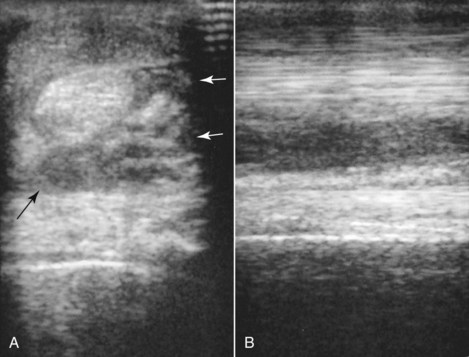Chapter 71Injuries of the Accessory Ligament of the Deep Digital Flexor Tendon
Pathogenesis
The incidence of desmitis of the ALDDFT is rather different from that of other tendonous and ligamentous injuries. Injuries occur more often in horses older than 8 years of age.4-6 The incidence in Thoroughbreds is comparatively low (rare in the Standardbred), and therefore this is an unusual injury in event horses or racehorses, except in older steeplechasers. Desmitis is a relatively common injury in ponies (see Chapter 126) and crossbred horses, including pleasure horses.4,5 The incidence in Warmblood horses is also high.6 Desmitis occurs in older show jumpers (see Chapter 115), especially Grand Prix–level horses,12 in older dressage horses,12 and also sometimes in young, extravagantly moving dressage horses (see Chapter 116). Desmitis is generally a unilateral forelimb injury (Figure 71-1), although occasionally it occurs bilaterally, and is a rare cause of hindlimb lameness.
In hindlimbs, desmopathy of the ALDDFT has been seen most frequently in cob-type breeds11-13 and Quarter Horses or Quarter Horse crosses,16 even in some horses or ponies of a comparatively young age, and does not appear to have been induced traumatically in all horses. In some of these horses the condition has been bilateral, developing simultaneously or sequentially in each hindlimb. Desmopathy frequently has been associated with a tendency to stand with the fetlock of the affected limb partially flexed (Figure 71-2
Stay updated, free articles. Join our Telegram channel

Full access? Get Clinical Tree



